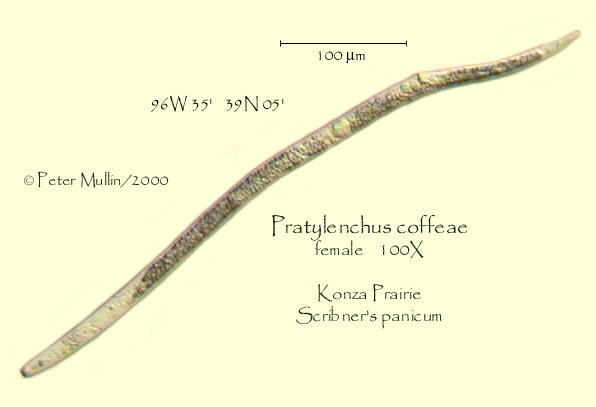I have seen both some of the largest and smallest genomes among animals (well, I have seen stain bound to their DNA, at least). The largest report remains that of the marbled African lungfish, Protopterus aethiopicus, at a gigantic 132Gb (about 40 times more than humans). Some authors argue that this is an overestimate, but regardless they have huge genomes that are undoubtedly much, much larger than those of any mammal.
Until recently, the smallest animal genome size was reported to occur in some root-knot nematodes of the genus Meloidogyne (~ 30Mb) or perhaps in the placozoan Trichoplax adhaerens (~ 40Mb). I tended to have doubts about the nematode estimates because they were derived using older methodology. However, my colleague Serge Morand and his co-authors now report an even smaller genome in a plant-parasitic nematode based on estimates using modern flow cytometry techniques. In particular, the genome size of Pratylenchus coffeae is estimated at about 19Mb, making it the smallest so far found in a metazoan.

Assuming that the lungfish value is reliable, this extends the overall range of genomes sizes in animals to almost 7,000-fold.
_________
References:
Leroy, S, S. Bouamer, S. Morand, and M. Fargette. 2007. Genome size of plant-parasitic nematodes. Nematology 9: 449-450.
Image from http://nematode.unl.edu/pracoff7.jpg

So, do they have tiny cells?
Must be. I’m going to see if I can get some and will prepare an image with their stained nuclei next to a lungfish’s stained cells.
Cool. I had no idea that there was that sort of range in animal genomes.
So…does this mean that the intelligent designer has front-loaded the lungfish genome heavily because it is going to evolve into a whole set of new species in the future? 🙂
Does this mean that PZ is wrong, and our future overlords will be lungfish, not cephalopods? 🙂
Then what about Mycoplasma laboratorium?
Not an animal.
Let’s sequence this minimal genome and see what happened (or not happened) to it! In particular, I wonder whether only the junk is gone or if the gene content is low too.
It is likely that both occured. Genome contraction will have reduced the primary gene number and the intragenic regions.